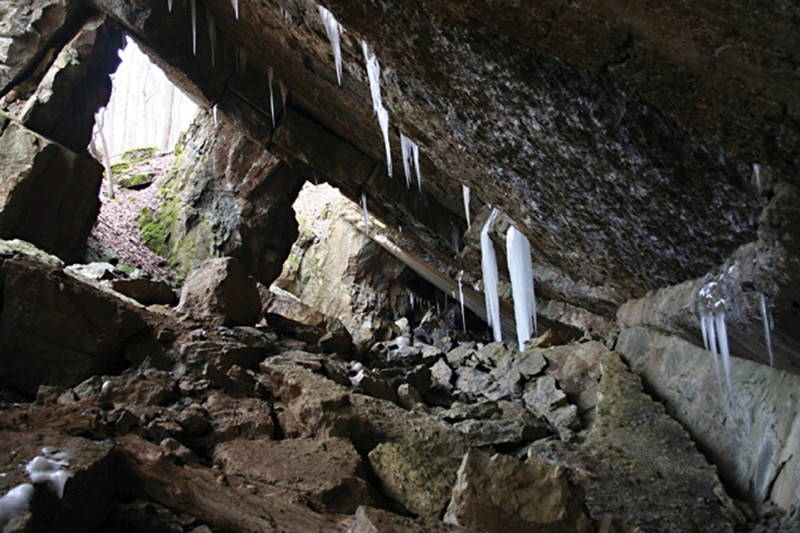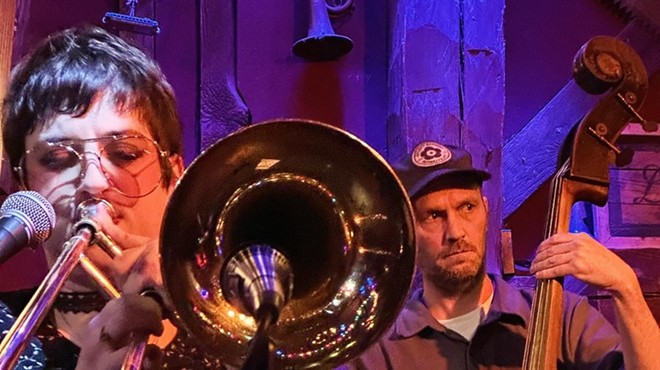Finally, a bit of good news here in the Anti-Sixties, after a year featuring various scenarios of apocalypse, environmental devastation, and intolerance: After more than two months of nonstop work, an international team successfully brought 33 Chilean miners safely home from half a mile beneath the Earth. I stayed up half the night watching, one by one, as the men emerged from beneath the ground in a little capsule, and were greeted by loved ones, the president, and his wife. It was better than the Beatles.
In the anxious times we’re living through, this is a triumph of humanity, even though the problem was created by the people who run a massive corporation hiring people to dig for gold under extremely dangerous conditions. This was not a natural disaster. But the solution represented humanity at its best.
We could fault the worldwide vigil around the rescue as a feel-good event, but I daresay that’s what the world needs now: to actually feel good about life and love rather than the stock market or “American Idol.” We do a lot of getting pissed off and most of that involves how little regard is afforded to the worth of life. Watching those guys come out of the rescue pod one by one, and embrace their families, it was impossible not to appreciate being alive, right then, on the spot.
Yes, we can even feel good about humanity’s ability to cooperate at doing something helpful. There was a time those men would have been left for dead, even if some effort might have saved them. Part of what did save them was publicity—you’re always safer near a TV camera, unless it’s hidden in the ladies’ room. The drilling experts, engineers, submarine scientists, geologists, and (actual) rocket scientists got the guys out. The doctors and psychologists on the surface actually seem to have offered some significant help.
Yet in reality it was the miners themselves who kept it together under some strange, extreme circumstances, rationing teaspoons of food and cups of milk for the first 17 days on the verge of starvation. They organized work tasks based on their specialties, keeping their living space clean, digging wells for fresh water and most of all, getting along. Or rather—getting along, eventually. Apparently the sanitized account of events has left out the at-times intense conflict that they experienced, and their darker thoughts of waiting to die during those first 17 days.
Efforts for rescue began August 5, without any knowledge of survivors, and for 17 days those efforts persisted nonstop without any success. The government and rescue teams kept trying, drilling bore holes into different layers and shafts of the mine, even sending rescuers down ventilation shafts that collapsed. Everyone is amazed by the success of this enterprise, but if rescuers had given up during those 17 days, there would have been no rescue. From that first day on, the message from the president on down was to spare absolutely no expense.
Let’s go to the chart and see what story it tells. Remember that in doing mundane astrology like this, the first thing to do is observe whether, and how, the chart describes the event. That story starts straight away with the ascendant.
The time the first miner emerged was am local time. Astonishingly this gives us an ascendant in the first degree of Cancer, activating the world-as-one Aries Point—a kind of astrological jackpot. In case you think this is likely to happen (regardless of how often it’s been happening lately), remember that the ascendant degree changes every four minutes: it flies by. Any chart that highlights the early degrees of any cardinal sign (Aries, Cancer, Libra, or Capricorn), particularly the very first degree, qualifies, and this is rare.
With the Aries Point highlighted, the most intimately personal events mingle with the most public. We learned about the family lives of the miners, including some intimate details, but moreover, we felt close to them and their families, a Cancer theme. Over and over, we heard reporters comment on how emotional the situation was. Hard-nosed Dylan Ratigan shamelessly asked one man on the scene to describe his experience from an emotional perspective—a giant leap for mankind. We could all empathize with these men and their families. That’s a nice image of the Aries Point with a Cancerian flavor: the world coming together emotionally as a family, including the girlfriends and mistresses.
Exactly opposite the Cancer ascendant is Pluto in early Capricorn, right on the 7th house cusp. Remember the cardinal cross I’ve written about 41 times this year? It made a big cameo in this event, coming up exactly on the horizon. That means emphasis, and Pluto was one planet making the point. Ceres (the former asteroid, now dwarf planet) and mythological nemesis of Pluto, was in a conjunction to Pluto, as if directly negotiating for her daughter Persephone to be brought up from the underworld. Ceres had just arrived in Capricorn a few days earlier. It was as if she went down there personally and got the guys out.
Pluto in Capricorn has another incarnation—the corporate agenda that nearly killed these guys. Pluto shows up there as the near-death experience that they’re about to narrowly survive. This is the side of the coin where Pluto actually is the “lord of death” and his realm, his current version of Hades, is the corporate system.
This is part of a larger astrological picture. The cardinal cross that has been whipping, flogging, and stressing us all year is thankfully not quite what it used to be, but it’s still a potent force. These kinds of astrological events have a long story arc, stretching out for years. We’re still close to the center of the story, but we’re coasting on the momentum of recently past aspects, rather than ones that are building up—with one exception, that is, which I will come back to.
That penetrating energy of Pluto in Capricorn has been all over the news. This year we’ve had at least two other major stories that involved events deep beneath the Earth—the BP oil spill, and the loss of 29 miners at the Upper Big Branch Mine in West Virginia earlier this year. We also heard from a volcano in Iceland, which qualifies as news from beneath the crust. During an episode of Mercury retrograde this year, volcanic dust disrupted air travel all across Europe and by ripple effect, around the world. The earthquake in Haiti had a similar feeling. This story had a much happier ending than all of the above.
Unfortunately, much other news has been pretty misanthropic lately. Earlier in the year, I described our moment in history as the Anti-Sixties. The astrology of 2010 is a kind of mirror image of what we experienced in 1969. The main feature of `69 was a Jupiter-Uranus conjunction in Libra. Earlier this year we had one in Aries, opposite the Libra event to the degree. It’s just like the Sixties right now—only exactly opposite. This has come true once again as we are living through an election cycle that has been dominated by openly celebrated homophobia. The supposed love and peace theme of the Sixties has been replaced by publicly displayed hatred directed at a vast segment of our population: people who share affection with members of the same sex. In studying social history, it’s clear that political forces openly attacking any one form of sexual or relational expression spreads to the rest of them; we might want to consider stopping this pattern, if only out of self-interest.
The Teabagger movement has succeeded in floating candidates who have made homophobia their main platform. It’s the current version of red meat for their electoral base. One such candidate is determined to make the point that she’s opposed to you having sex with yourself (which is obviously gay). Five different Teabagger candidates for US Senate are against abortion even in cases when the pregnancy involves incest and rape. We now have several generations of girls, young women, and early-middle-aged women who have no recollection of life before Roe v. Wade and to whom the term “back room illegal abortion” means nothing. We might want to set about educating one another.
I am less astonished by this than I am by the tolerance of the American people for the viewpoint of total sexual intolerance. I mean, I’m really, truly amazed. Even as the views of our supposed leaders translate into a cluster of teenage suicides and a nationwide epidemic of bullying, most people are silent. The silence involves the nature of homophobia, which is the projection of self-judgment onto others. Most of us may not project that self-judgment, often focused on sex, so violently, but we do quietly harbor the judgments. Usually they involve guilt, and some element of jealousy that someone might have more fun than you.
The current sky is featuring a deep exploration of this subject in the form of three planets in Scorpio. One is Mars. That is the straightforward, no-need-to-be-explained nature of desire.
One is retrograde Venus. That is an inquiry about how we really feel about our inherently sexual nature. Humans are the most hypersexual animals, and most of us go through the day acting like nuns and monks, mortified that anyone might realize we’re so much as thinking about sex. So this hypersexuality meets a kind of resistance that can only be put forth by the human mind, and the result is that many people are like walking pipe bombs. The question being asked by Venus retrograde is, how can we unravel that? What is the source of the challenge, the struggle, the difficulty, the resistance?
Venus retrograde in Scorpio is about going to the deepest aspects of these questions, describing a quest to understand our sexual histories and how they influence us. The retrograde describes a process of exploring how our sexual values influence our relationships and the kind of involvements and entanglements that we create.
Then there is Vesta. She’s just recently joined Venus and Mars, and she is the astrological guardian of what you might call sacred sexuality. Vesta is the faceless (never depicted) goddess of fire; her servants, the Vestal Virgins, tend the sacred hearth, keeping the fire burning around the clock. So there is a call to devotion here: of devotion not to “a relationship” but to your sexuality. She stands as a kind of witness to the journey and the quest for self-understanding described by Venus and Mars in Scorpio. In a few words, I would sum up this transit at its best as a quest to be submissive to one’s own desire.
Vesta is the centerpiece of the home: the hearth. But this is no ordinary hearth; it’s the inner flame, which we must tend, lest it go out. And I daresay many of us have taken that sacred flame for granted, or used sex as a commodity rather than the beautiful celebration that it can be. Which leads me back to Pluto.
Pluto is one of the planets associated with Scorpio. And over the next phase of astrological history, Pluto is going to come into a kind of focus that we have not experienced in half a century. The Uranus-Pluto square of 2012-17, which is about to start rumbling loudly in 2011 as it warms up to the first exact contact of June 2012, talks about total revolution of both the psyche and something much larger. Part of this revolution will be about the intersection of sex and identity. Then that meets up with the religious/corporate/governmental structure that we try to fit sex into—and where it doesn’t go.
Some of us will burst free because it feels great. Some of us will have to be extracted in a capsule through a 24-inch tube, one at a time. Some of us have no plans to come back to the surface. It would help if you decide which you want.
















